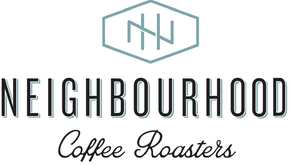Price increases & the future of specialty coffee
As many of our customers know, our roasting philosophy is centred on highlighting the natural characteristics of high-grade, specialty coffees.
In contrast, traditional Italian-style roasting companies, common in the inner northern suburbs, emphasize darker roasts, low prices(not always), and selling high-volume wholesale, which often eliminates much of the coffee’s natural acidity and complexity—qualities that develop through high-altitude growth and labour-intensive harvesting methods.
Darker roasting is typically used to mask imperfections, allowing roasters to work with lower-quality beans.
Historically espresso machines became more widespread in Italy during the mid-20th century, the focus increasingly shifted toward short, intense shots. Dark roasts complemented this style perfectly, delivering the bold flavours and strong punch that customers came to expect.
This approach also allowed cafés to use less coffee per serving, making it a more profitable model for businesses.

Over time, this dark roast profile—rich, bitter, and full-bodied—became deeply embedded in Italian coffee culture. It was then exported worldwide by major brands like Lavazza, Illy, and Segafredo, shaping the global perception of "Italian coffee." Yet, this tradition is still alive today, with locally owned roasters in Brisbane continuing to embrace and refine this iconic style.
This distinction is key to understanding the difference between high-volume roasters and boutique roasters committed to quality.
If you’ve ever looked into the production area of our roastery, you may have noticed nearly twenty different sacks of coffee sourced from all corners of the globe. Each of these coffees serves a unique purpose—some are crafted into blends, others offered as single origins, each with a story rooted in heritage, sustainable harvest, careful fermentation, and strong community values.
Our vision has always been to support a part of the industry where farmers can earn a fair, sustainable income for their hard work. We choose to work with producers who value quality over volume, and we pay premiums to ensure their efforts are properly rewarded.
However, the global coffee industry is now facing an unprecedented crisis—and Australia is not exempt. Since February, the price of green coffee has surged beyond US$4 per pound, with little sign of a return to previous levels. This is the result of multiple years of poor harvests, severe supply chain disruptions, and ongoing global economic shifts.
For our business, the average cost of green coffee has doubled this financial year. Continuing on our current path—supporting small producers, paying ethical prices, and roasting for quality—has become financially confronting. In contrast, large multinational companies like Illy have reported record profits.
With massive financial resources, these corporations are leveraging their power to push prices down further—manipulating the market and leaving small farmers with less than ever before.
Many are already grappling with drought, skyrocketing fertilizer costs, and a shrinking, ageing workforce. The younger generation is moving away from farms to cities, leaving a gap that is increasingly hard to fill.
If you’re buying coffee at ultra-low prices from major grocery chains, it’s important to understand what that really supports. It often props up a system that resembles modern-day slavery—one where clever marketing masks the corporate manipulation that keeps people in poverty.
As a specialty roaster, we remain committed to quality, ethics, and transparency—but this commitment comes at a cost.

We hope this post helps shed light on an important issue: despite rising coffee prices, very few coffee farmers are benefiting. Now let us look at the next part of the supply chain, much of the financial burden falls on the companies that import coffee into Australia—businesses that take on significant risks to ensure we get our daily cup, yet receive little recognition for their role in sustaining the industry.
They are at the cold face to understand the needs of the coffee farmers and it’s a bleak picture.
Importers are now faced with the cost of a single container of coffee has now doubled, surpassing US$220,000. Importers are facing soaring borrowing costs, shrinking margins, and an increasingly unstable market. Meanwhile, large multinational coffee brands are exploiting the situation—poaching long-standing farmer relationships by offering low-price, upfront payments in exchange for harvesting all the coffee at once at lower grades of quality and post-harvest process.
This coffee is then funnelled into cheap supermarket brands, prioritizing volume over craftsmanship.
In this scenario, everyone loses—farmers, importers, specialty roasters, and ultimately, consumers. Without incentives to uphold best-practice harvesting methods, the overall quality of coffee is declining, pushing the industry toward a future of lower-grade, mass-produced coffee.
It's a critical moment for the industry, and the choices we make as consumers and businesses will shape its future.
There’s a lot of hype in the coffee industry about what makes a great coffee business—striking architecture, the latest brewing gadgets, stylish accessories, intricate latte art, and the overall café experience.
But it’s time for the industry to shift its focus beyond just aesthetics and trends. We need to rethink how we value the entire supply chain—the farmers, importers, and roasters—who make our daily coffee ritual possible.

